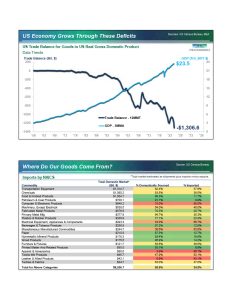 Unless you are in the automobile, home appliances, pharmaceutical, or electronic equipment business, the impact of the US tariffs will be lower than the current media noise. Assuming that the 200% tariff threats settle down, which current trends indicate, with the exception of industries noted, the cost impact is between 5.0%-15.0% to your supply line in 2025 per The Wall Street Journal articles.
Unless you are in the automobile, home appliances, pharmaceutical, or electronic equipment business, the impact of the US tariffs will be lower than the current media noise. Assuming that the 200% tariff threats settle down, which current trends indicate, with the exception of industries noted, the cost impact is between 5.0%-15.0% to your supply line in 2025 per The Wall Street Journal articles.
Metal and automotive tariffs are already in place with recent cost increases running 20%-30% for structural and coiled metals. This is the cost impact on metal fabricators, and most have passed those costs onto their clients. Other goods tariffs are in negotiation, but the norm looks to settle between 15%-25%, depending on source country and material type. Estimates are cost impacts to total cost of goods by 5%-7%, depending on labor content.
As we published last month in our middle market midyear outlook, the economy is doing well and the 2025 outlook is still positive with a slight chance of recession per The Wall Street Journal. We also subscribe to ITR Economics, and the attached charts show that the US trade balance and US GDP have had an inverse relationship for the past 20 years, indicating trade imbalance does not affect the GDP. The second chart shows the percentage of imported goods by product type, indicating tariffs are muted to most supply lines.
If you are concerned about tariff impact on your supply line, here are five steps you can do to prepare:
- Map the impact of tariffs to each of your major supply lines and suppliers.
- Quantify the cost impact for each of your imported items outlined in your sourcing map.
- Evaluate your ability to pass through your cost increases without hurting market share.
- Explore supply chain alternatives and substitute products that may be sourced domestically.
- Develop scenarios for maximizing revenue with the impact of the previous four steps.
Over the past 60 days, the President has shown much more flexibility in negotiating tariffs, and this is changing the risk profile for many industries. Last month in our midyear report we showed data on middle market CEO opinions from The Harris Poll based on 412 responses from April 7 to April 29, 2025. Some results are:
- 20% of executives reduced their capital spending in Q2.
- 24% experienced lower revenues and 26% had lower earnings.
- Less than 50% will expand capital investment.
- These indicators are leading to substantial declines in new investment that is slowing bank lending demand.
Could it be that now is the time to make those postponed decisions and move your business forward? Most businesses are showing sustained profitability and are in healthy cash positions. First movers get the first profits!
To navigate 2025’s uncertainties, consider scenario modeling and cost mitigation strategies. Contact C Squared Solutions to explore how interim executive support can strengthen your financial planning and operational resilience.



